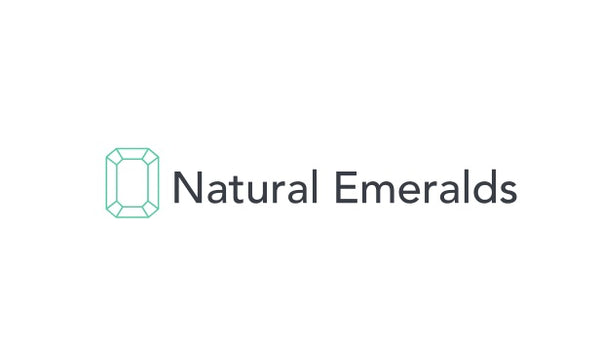Facet rough emerald stones are a great way to really enhance the gem cutting experience that you have. If you’re looking to improve your gems, consider raw facet emeralds.
There are a lot of different aspects of this, and here, we’ll go over the ins and outs of facet stones.
What are facet Stones?
Facet stones are stones with flat surfaces that are polished known as facets. They reflect light along the outside.
They’re typically transparent and are what you see when you get engagement rings.

Faceted stones usually have a stone with a flat type of top. This is because it shows brilliance through this cut.
The goal of this is to maximize the beauty of these.
They do come in different shapes, including hearts, ovals, and even stars and cushions.
Facet Grade Raw Emerald Stone Identification?
Raw emeralds follow this sort of style, and also are a good way to really enhance one’s beauty.
Rough emeralds are usually evaluated based on the deep, unique colors. It’s exquisite, and breathtaking. They are quite a great contrast among the diamonds and rubies that are out there.
There are a few different types of emeralds:
- Rough grade: they’re rough, and usually are the most natural types of emeralds
- Facet grade, great for faceted types of cuts. Ideal for rings and jewelry making.
- Cutting grade: while not good to facet and not high in quality, they are good to cut the stones and provides a rough look to this.
- Cabochon grade: A flat surface, usually used with setting pendants and the like.
Rough emeralds that are facet grade tend to have a smoother top amongst them. that’s because they’re specially cut with those flat surfaces showing, and then are set into the specific area.
The grade as well also determines the depth of the color, the durability, and also the inclusions. If the grade is not correct, it does result in loss of carats.
Some emeralds are harder to cut than others, usually due to the following:
- They’re more fragile
- They usually have some kind of fractures
- They are cut in certain ways to improve the saturation, hue, and outcome too.
- Many emeralds have different colors depending on the cut.
Type of Facet Rough Emerald Stones?
There are a few different types of rough emerald stones.
Not every single one of them is a gem quality, since a lot of times, they vary in types and amounts.

The first is the brilliant cut, which are triangular, and spread out from this gem’s center. They give off scintillation with every single type of cut.
Step cut, which is the next one, looks like steps that go up. These are good for showing the purity of the color, and the glow.
Mixed cuts are basically a mix of cutting styles mentioned above. They have facets that are brilliant, especially on the crown of this.
There is also the briolette cut, which is another classic in a teardrop shape. It looks rounded lie a pear and is popular in earrings and pendants.
There is also the ceylon cut, which is a brilliant cut on the crown, and a step cut on the pavilion. It’s one that’s basically a reverse of the step cut, so it creates more brilliant overall.
Finally, we’ve got the rose cut, which is the most fashionable and unique type of style, just like the other cuts. Rose cuts tend to also have round bases that are flat, with tops that are faceted.
They use flat and rough shaped types of gems, with some brilliance to them. However, they’re nowhere near as brilliant as they might be compared to modern brilliance. They’re coming back, especially with the appeal to tradition.
How to select Facet Grade Raw Emerald?
Choosing a facet grade rough emerald is dependent on a few factors:
- A good color that will really enhance demand
- A good shape that’s blocky, chunky, or rounded. Fat ones tend to yield badly.
- A good size. You want something around one to two carats minimally, with the standard being about a 20% yield on the stone
- Clarity, as you want something that does have minimal inclusions. They do hamper the state of the stone
Remember that emeralds are naturally faceted, so if you struggle with finding a perfect stone, don’t always sweat it.
How to do Faceting of Raw emerald stone?
To facet emeralds, you need to choose cuts, with the most common being the emerald cut. That’s a triangular shape.
You want to cut this to the shape decided, using either a jigsaw or a circular saw if there are flat lines. You want a blade with a hardness that will cut this, such as a diamond blade.
Facet this using a machine called a faceting machine too. Attach the emeralds to each of these facet pegs, either with glue or clamps. Direct these plates all the way down towards the gem and the angles you plan to facet on these with a slow, steady level of pressure.

Polish this by using belt sanders, and then try to ensure you use the highest grade plates, removing every scratch you can from these emeralds. If you want a more matte finish, skip that.
At this point, you can oil the stone, however, be mindful of the fact that oiling this does make it brighter and shinier, but it’s regarded as devaluing the stone. That’s because it does make this reactive, and it does wear over a period of time.
With that said, there are a lot of different aspects of faceting that can really stand out.
If you want to really make emeralds shine, providing a brilliance that can’t be beaten, then you’ll definitely want to facet.
This guide showed you the ins and outs of faceting these emerald stones, providing you with the exact steps necessary to help you get on the right track to improve your stones.

